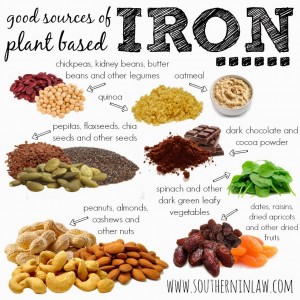IRON :-Iron is a component of a number of proteins including haemoglobin, myoglobin, cytochromes and enzymes involved in redox reactions. Haemoglobin is important for transport of oxygen to tissues throughout the body. Iron can exist in a range of oxidation states. The interconversion of these various oxidation states allows iron to bind reversibly to ligands such as oxygen, nitrogen and sulphur atoms. Almost two thirds of the body’s iron is found in haemoglobin in circulating erythrocytes. About a quarter of the body’s iron is found in readily metabolised stores as ferritin or haemosiderin in the liver and reticulo-endothelial system. The remaining iron is in the myoglobin of muscle tissue and a variety of enzymes necessary for oxidative metabolism and other cell functions. Recommendations by life stage and gender
Iron-Deficiency Causes:-iron-deficiency , the most common form of anemia, is a decrease in the number of red caused by too little iron. Without sufficient iron, your body can’t produce enough , a substance in red that makes it possible for them to carry oxygen to the body’s tissues. As a result, you may feel weak, tired, and irritable. About 20% of women, 50% of women, and 3% of men do not have enough iron in their body. The solution, in many cases, is to consume more . Sources of iron deficiency anemia:- |
||||||||||||||||||||||||||||||||||



